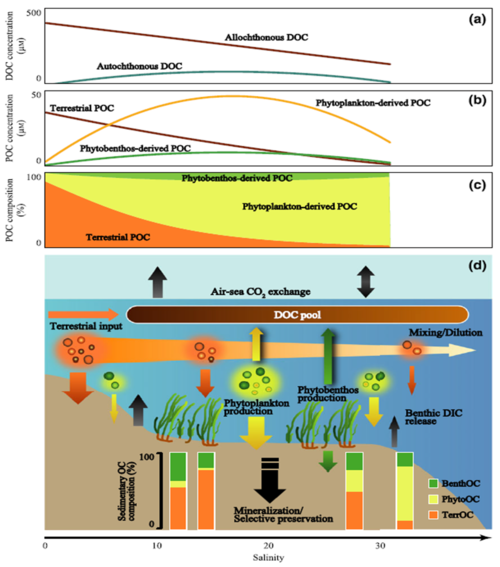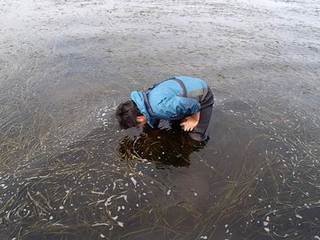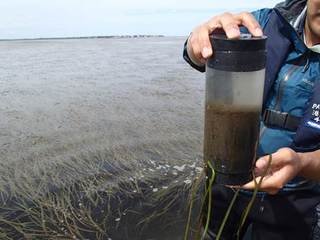Blue carbon: seagrass meadows function as carbon sequestration filters
Carbon sequestration processes: organic carbon derived from seagrass and terrestrial plants are preserved efficiently
1. Point
Kenta WATANABE and Tomohiro KUWAE (PARI) report that organic carbon dynamics contribute to carbon sequestration processes in a seagrass meadow. The research article was published in the scientific journal "Global Change Biology" (Journal Site).
2. Research highlights
Carbon captured by marine organisms has attracted attention as a new option for climate change mitigation. Hoewever, linkages between the dynamics of organic carbon (OC) derived from multiple sources and carbon sequestration in shallow coastal ecosystems are poorly understood.
We quantified the origin of OC pools, and then investigated how terrestrial, phytoplankton-, and seagrass-derived carbon contribute to the carbon sequestration processes (carbon storage in sediments, carbon sequestration in water column, and air-sea CO2 exchanges) and how the contribution changes with salinity gradients in a shallow seagrass meadows.
We found that autochthonous production sequestered CO2 in the water column at biological timescale, seagrass-derived and terretsrial OC were selectively and efficiently stored in sediments at even longer timescale (Fig. 1). Our empirical study showed that shallow coastal ecosystems function as carbon sequestration filters that mitigate atmospheric CO2 increases.

Fig. 1 Carbon flow and carbon sequestration processes in shallow coastal ecosystems. Burial of POM into sediments is a major carbon sequestration process. Phytoplankton-derived POM is a more dominat component than terrestrial POM in the water column, indicating that abundant phytoplankton-derived OM is potentially a major source of sedimentary OC. However, terrestrial OM and seagrass (phytobenthos)-derived OM are actually major components of OM in sediments, indicating that these components are more refractory than phytoplankton-derived OM and selectively preserved in seagrass meadows. Aquatic primary production can contribute a great deal to atmospheric CO2 uptake on biological timescales. Seagrass produces relatively refractory OM, which can be preserved in the ocean on geological timescales. Terrestrial OM is also preserved efficiently in sediments, where it is sequestered from the atmosphere.

Scene Sediment core sampling.

3. Article information
Title: How organic carbon derived from multiple sources contributes to carbon sequestration processes in a shallow coastal system?
Authors: Kenta WATANABE and Tomohiro KUWAE (PARI)
Journal: Global Change Biology 21(7): 2612-2623



